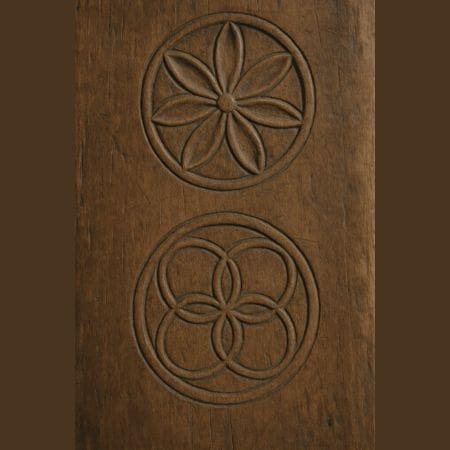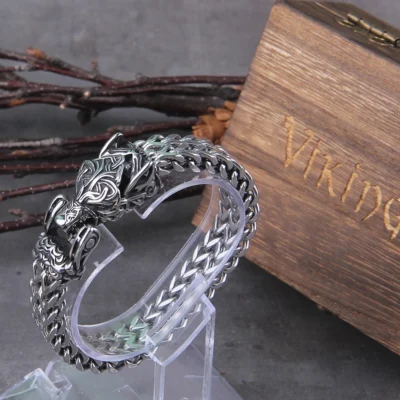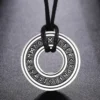
From crumbling church doorways to mighty castle gatehouses, faint scratches and enigmatic symbols adorn Britain’s historic buildings. They’re easy to miss—a small circle here, a daisy-wheel there—but to medieval eyes, these curious carvings were powerful guardians against the dark forces of witchcraft.
In a world gripped by fear of the supernatural, protection wasn’t left to chance. Instead, everyday people took chisel and knife to wood and stone, creating a hidden language of defence. Today, these “witch marks” survive as an intriguing testament to medieval anxieties—and an unexpected clue for the curious historian or heritage explorer.
Let us step back into a time when devils were thought to lurk in shadows, witches flew by night, and secret symbols stood as bulwarks between the mortal world and the unknowable darkness beyond.
The Medieval Mindset: Fear and Faith Intertwined
Medieval life was steeped in faith, yet stalked by fear. The medieval Church taught that evil spirits prowled the earth, seeking to tempt, torment, or possess unwary souls. Disease, fire, failed harvests, and sudden storms were all blamed on malevolent forces—and, increasingly from the late medieval period onwards, on the malefic influence of witches.
Witchcraft wasn’t merely a personal problem. It threatened the entire community. If your neighbour fell under suspicion, it could taint your village’s reputation, draw the attention of Church courts, or even spark panicked accusations that led to imprisonment—or worse.
Small wonder, then, that people armed themselves with protective magic. While priests performed blessings and sprinkled holy water, ordinary folk sought more practical, physical safeguards. These took the form of “apotropaic” symbols—a term derived from the Greek meaning “to turn away” (evil). Witch marks were part of this defensive toolkit.
What Are Witch Marks?
“Witch marks” is the modern nickname for a variety of protective symbols carved, scratched, or etched into medieval buildings and objects. Scholars and heritage organisations now use the more precise term “ritual protection marks.”
Such marks were not purely decorative. They served a vital spiritual purpose: to ward off evil spirits, demons, witches, and misfortune. Many were inscribed near vulnerable points—doorways, windows, fireplaces—anywhere an evil presence might try to enter.
Some of the most common types include:
- Marian marks (VV or AM): These were double Vs or overlapping As and Ms, signifying “Virgin of Virgins” or “Ave Maria,” calling on the Virgin Mary’s protection.
- Daisy wheels (hexafoils): Six- or eight-petalled flower-like designs, believed to trap evil spirits in an endless looping pattern.
- Mesh or lattice patterns: Thought to confuse witches or demons, who were compelled to count every line and might become stuck.
- Circles and interlocking rings: Representing eternity and divine perfection, forming barriers evil could not cross.
- Burn marks: Especially on timber beams, created deliberately with candles or hot irons to deter evil.
These marks weren’t purely pagan superstitions. Many drew on Christian symbolism, showing how medieval people blended folk beliefs with official Church teachings to create a spiritual defence system all their own.
Witch Marks in Castles and Churches
One might assume such “folk magic” belonged only to humble cottages—but witch marks appear in the loftiest of settings, from castles to cathedrals.
Take Tower of London as a prime example. In 2017, historians discovered ritual protection marks in the Salt Tower and the Bloody Tower. These included mesh patterns and concentric circles, carved deep into the stone. Even England’s most feared fortress—seat of royal power and political terror—felt the need for supernatural protection.
Knole House in Kent reveals similar evidence. Carpenters’ marks on doorframes, once thought merely decorative, have been re-identified as protective symbols, positioned to block malevolent spirits from entering chambers.
In churches, these marks often cluster around doorways and fonts. The medieval church wasn’t merely a place of worship—it was a community refuge in times of fear. Marks inside church porches or around windows reflect anxiety that evil forces might defile holy spaces.
One haunting example lies in Tewkesbury Abbey. Tiny daisy wheels and Marian symbols adorn stone surfaces near the south porch, cut into medieval masonry by parishioners seeking protection.
Witch Marks in Homes and Cottages
Domestic architecture tells an equally fascinating story. From timber-framed Tudor houses to modest medieval cottages, ritual protection marks were a silent yet omnipresent feature of everyday life.
Consider a humble fireplace. In the medieval imagination, the chimney was a gaping portal through which witches or demons might enter. Thus, beams near hearths often bear scorch marks—long believed accidental, but now recognised as deliberate burn marks meant to repel dark forces.
In the Weald and Downland Living Museum in Sussex, original medieval timbers from rescued houses display repeated daisy wheels and Marian marks, particularly around hearths, doors, and loft hatches.
Even barns and stables were not exempt. Animals were crucial to survival, and harming a farmer’s livestock was a classic accusation against supposed witches. Witch marks in barns were carved to protect cows, horses, and grain stores from witchcraft.
The Symbolism of Circles: Daisy Wheels and Hexafoils
Perhaps the most striking witch mark of all is the daisy wheel. These geometric rosettes, often with six petals, symbolised eternity and divine perfection.
Why were circles so powerful? Medieval people believed evil travelled in straight lines and could be trapped or diverted by circular forms. The looping, unbroken line of a hexafoil was thought to confuse evil spirits or bind them within an endless journey.
Daisy wheels weren’t confined to buildings. They appear scratched into furniture, wooden chests, and even bread boards. Such objects were daily companions, reminding owners of divine protection every time they cooked a meal or stored precious belongings.

Witch Marks as Personal Protection
Witch marks weren’t only architectural. Many medieval folk carried protective symbols on their person. These included:
- Amulets with inscribed symbols or religious words.
- Rings engraved with protective Latin phrases.
- Written charms folded and sewn into clothing or hidden in shoes.
Such talismans were often tailored to the individual’s fears—childbirth, plague, bad luck, or demonic visions. These personal witch marks demonstrate the intimate, daily presence of supernatural anxieties in medieval life.
The Decline—and Survival—of Witch Marks
By the 18th century, belief in protective marks began to wane. Enlightenment thinking dismissed folk magic as superstition. Yet the practice lingered longer in rural areas, where traditions passed quietly from one generation to the next.
Even into the 19th century, some houses were still being built with ritual marks hidden inside timber frames. The Industrial Revolution may have transformed Britain, but the fear of witches and spirits died hard.
Today, thousands of witch marks survive—though many remain hidden beneath centuries of whitewash or restoration work. Thanks to projects like Historic England’s nationwide survey, we’re now rediscovering this remarkable layer of Britain’s heritage.
Witch Marks and the Law
It’s important to note that not every scratch or burn in a medieval house is a witch mark. Sometimes, a circle is simply a mason’s compass mark, used to guide stonework carving. Yet the location and repetition of certain symbols often hint at deliberate magical intent.
Interestingly, English law treated witchcraft both as a spiritual crime and as a felony. After the Witchcraft Act of 1542—and later the notorious Witchcraft Act of 1604—beliefs about witches gained legal teeth. This undoubtedly increased anxiety and fuelled the desire for protection.
However, carving witch marks was never illegal. Unlike casting spells or owning grimoires, inscribing protective symbols was an accepted form of “white magic,” rarely attracting suspicion. It lay on the safer side of the supernatural spectrum—a way to repel evil without crossing moral or legal boundaries.
Modern Discoveries and New Fascination
In recent years, archaeologists, historians, and heritage enthusiasts have shown growing interest in witch marks.
- At Creswell Crags on the Nottinghamshire/Derbyshire border, more than 1000 witch marks were discovered in the caves—a staggering find. These ranged from Marian symbols to complex mesh patterns, suggesting the caves were seen as places of spiritual danger.
- In Lacock Abbey, Wiltshire, protective marks have been found on doorways and beams, showing how even noble houses employed folk defences.
- At St Mary’s Church in Stoke Mandeville, Buckinghamshire—excavated for the HS2 railway project—hexfoil symbols were revealed on medieval timbers.
These discoveries spark modern curiosity. They remind us how medieval people lived in a world where faith, fear, and daily life were intertwined.
Spotting Witch Marks: A New Way to Explore History
Next time you visit a castle, church, or historic house, keep your eyes peeled for subtle scratches, loops, and circles. Look:
- Around doorframes and windows.
- On beams above fireplaces.
- In church porches and near fonts.
- On staircases and loft hatches.
Even National Trust and English Heritage sites now highlight witch marks in their visitor guides. You may be standing in front of stone walls once thought strong enough to repel witches—or discovering daisy wheels scratched by nervous hands five hundred years ago.
Spotting witch marks is like finding secret messages left by medieval people, inviting you to glimpse their hidden world of hopes and fears.
Why Witch Marks Still Matter
Some might dismiss witch marks as quaint relics of superstition. Yet they are far more than that. They are physical echoes of how people once made sense of a dangerous and mysterious world. They reveal:
- Medieval spirituality was practical as well as devotional.
- Fear shaped architecture, art, and daily routines.
- Even the powerful—kings and noble families—felt vulnerable to supernatural harm.
Moreover, witch marks are deeply human. They speak of love for family, fear for one’s home, and the hope that some small scratch in stone might hold back the darkness. They remind us that our ancestors were not so different from us—seeking security in the face of uncertainty.
Seek the Marks, Tell the Stories
Witch marks remain hidden in plain sight all over England and Wales. They linger in the shadows of castle towers, church pillars, and timber beams, waiting for curious eyes to rediscover them.
So, on your next historical adventure, pause a moment. Let your fingers trace a faint daisy wheel in ancient stone. Consider the anxious medieval soul who stood in that same spot centuries ago, hoping this simple mark would keep their world safe.
In the end, witch marks connect us across time. They remind us that history is not only written in grand chronicles, but whispered in quiet symbols, carved by ordinary hands striving to hold back the night.
Explore our Medieval Halloween guide

Medieval Magic
From enchanted pendants to legendary relics, this collection channels the magic, myth, and symbolism of the Middle Ages.
Whether you seek protection, wisdom, or just a touch of otherworldly style — you’ll find your talisman here.







